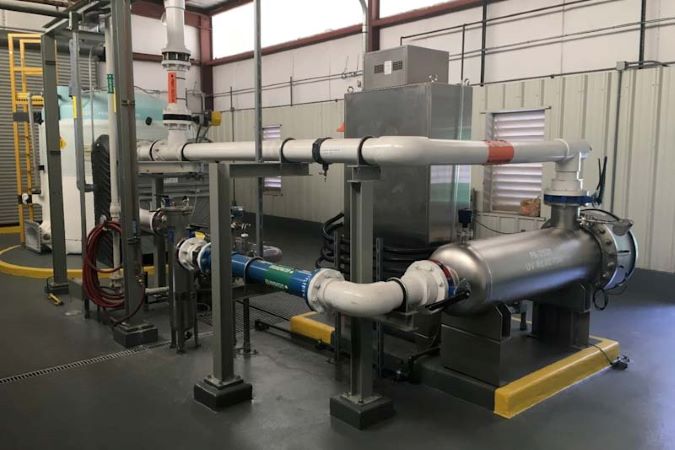Is your remediation system performing at its peak? Is it costing you more than it should in operations and labor costs?
Environmental managers often struggle with tight budgets and limited resources. Answering these questions can result in innovative solutions for improving performance and reaching site closure quickly, efficiently, and in a cost-effective way.
In this blog, Project Engineer Ross Horton offers practical advice on how remediation engineering can provide cost savings through optimization of your existing treatment system or by introducing new remediation system technologies.
What is Remediation System Optimization?
Remediation system optimization is the process of evaluating your current treatment system and implementing technology recommendations for significant long-term savings in your operational costs. Typical remediation systems include soil vapor, groundwater, and dual-phase extraction. Remediation system optimization is appropriate for all these as well as optimization of extraction well networks with multiple source zones and treatment criteria.
It starts with a performance evaluation of your existing remediation system to identify opportunities for improved capture and mass removal. Experienced hydrogeologists and engineers work together to determine what the existing subsurface conditions are, and where improvements can be made by optimizing the performance of existing wells and equipment.
Based on your specific remediation goals, contaminants of concern, and budget you may decide to invest in improvements to your existing equipment or take a more innovative approach to optimizing the entire remediation system.
Existing Treatment System Optimization
As remediation systems age, maintenance and labor costs oftentimes increase. An investment in replacing and refurbishing old equipment can easily pay for itself in reduced labor costs.
In one particular case, an existing groundwater remediation system had ten years remaining in the originally designed useful lifespan. Maintenance issues were occurring more frequently requiring visits from remediation technicians to troubleshoot equipment. Leaks, corrosion, and equipment failures were becoming commonplace.
The decision was made to invest in rehabilitating the treatment system. Operations ceased for 2 months while piping was replaced, motors were serviced, worn coatings were replaced, and investments were made in a new control system. Upon restart of the system, non-routine maintenance visits were reduced by 80%, and equipment failure is no longer an issue.
Introducing New Technologies to Reduce Cost
When the return on investment for upgrading the existing equipment doesn’t meet your financial threshold, consider an innovative systems approach for optimization. New treatment technologies have emerged in the past decade that can substantially reduce maintenance, labor, and operating costs.
On-site labor costs can be reduced with advanced automated control and monitoring systems. Advanced oxidation processes are a perfect example. With this technology, volatile- and semi-volatile organic compounds can be neutralized early in the process stream, reducing the costs of consumables like activated carbon and ion-exchange resins. Advanced oxidation processes can help advance your organization’s sustainability goals by reducing the treatment system’s footprint and energy consumption because they reduce or eliminate the need for ancillary support processes and systems.
Case Study: Remediation System Upgrade for Improved Mass Recovery
In this case study: Remediation System Upgrade for Improved Mass Recovery, we explore how replacing an underperforming ozone/peroxide advanced oxidation process system with a new Ultraviolet Light/Peroxide advance oxidation process remediation system increased remediation system uptime by 94%, and improved mass removal by an order of magnitude.
When to Evaluate your Existing Remediation System
If you have an existing remediation system whose mass removal figures have plateaued, or whose operations and maintenance costs are increasing, it’s time to consider an engineering evaluation.
Our expert engineers, hydrogeologists, and remediation technicians are here to serve you and help you meet your remediation goals. Hargis is your single-source solution that will work through all phases of rehabilitating and upgrading your remediation system, from cost analysis and technology evaluations, to engineering design and permitting, through pilot testing, construction, startup, and ongoing operations, maintenance, and performance monitoring of the new remediation system. Please give me a call to discuss your project, evaluate your options, and request a quote.

ABOUT THE AUTHOR
Ross H. Horton
Project Engineer
Hargis + Associates, Inc.
rhorton@hargis.com
LinkedIn: https://www.linkedin.com/in/ross-horton-847a9b91/
Mr. Horton is a project engineer and has been providing environmental consulting services at Hargis since 2017. His work includes civil, process, and control system engineering design for soil vapor, groundwater, and dual-phase remediation systems, regulatory and construction permitting, remediation system construction oversight and startup, system performance evaluation and optimization, technical report preparation, and project management.
Ross is no longer with Hargis + Associates, Inc. For questions regarding this blog, please email hargisinfo@hargis.com.

